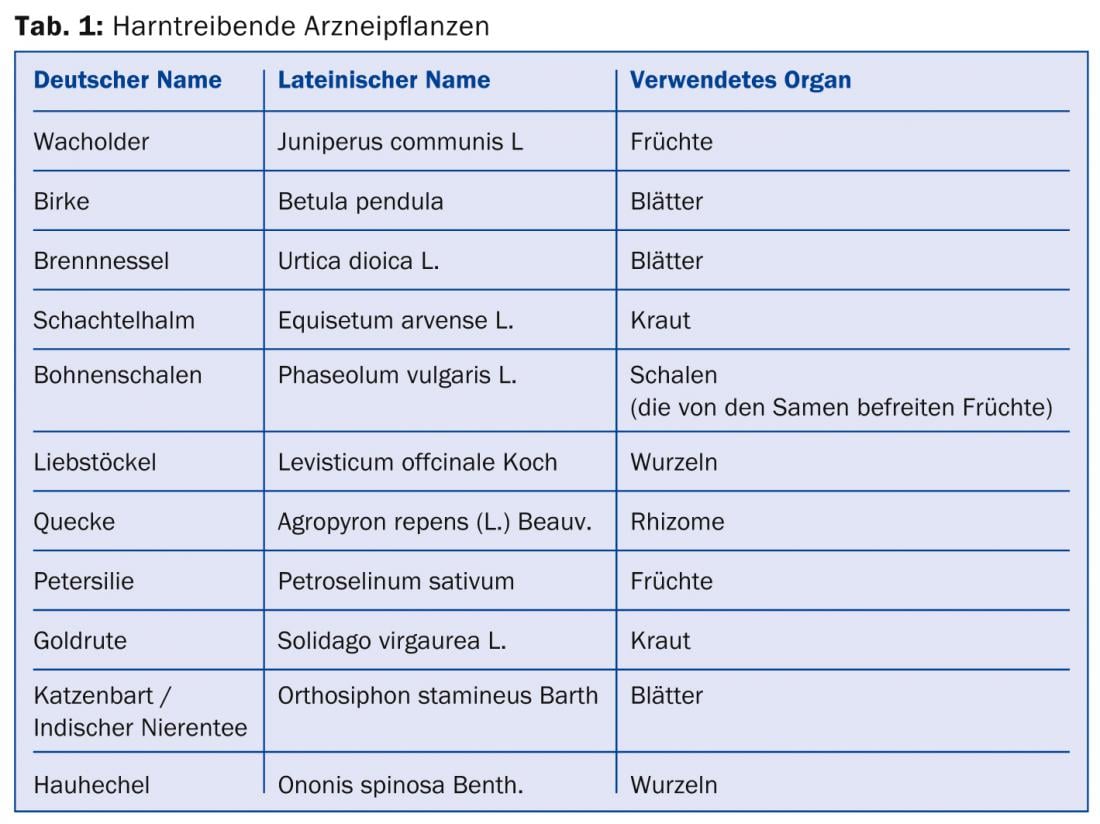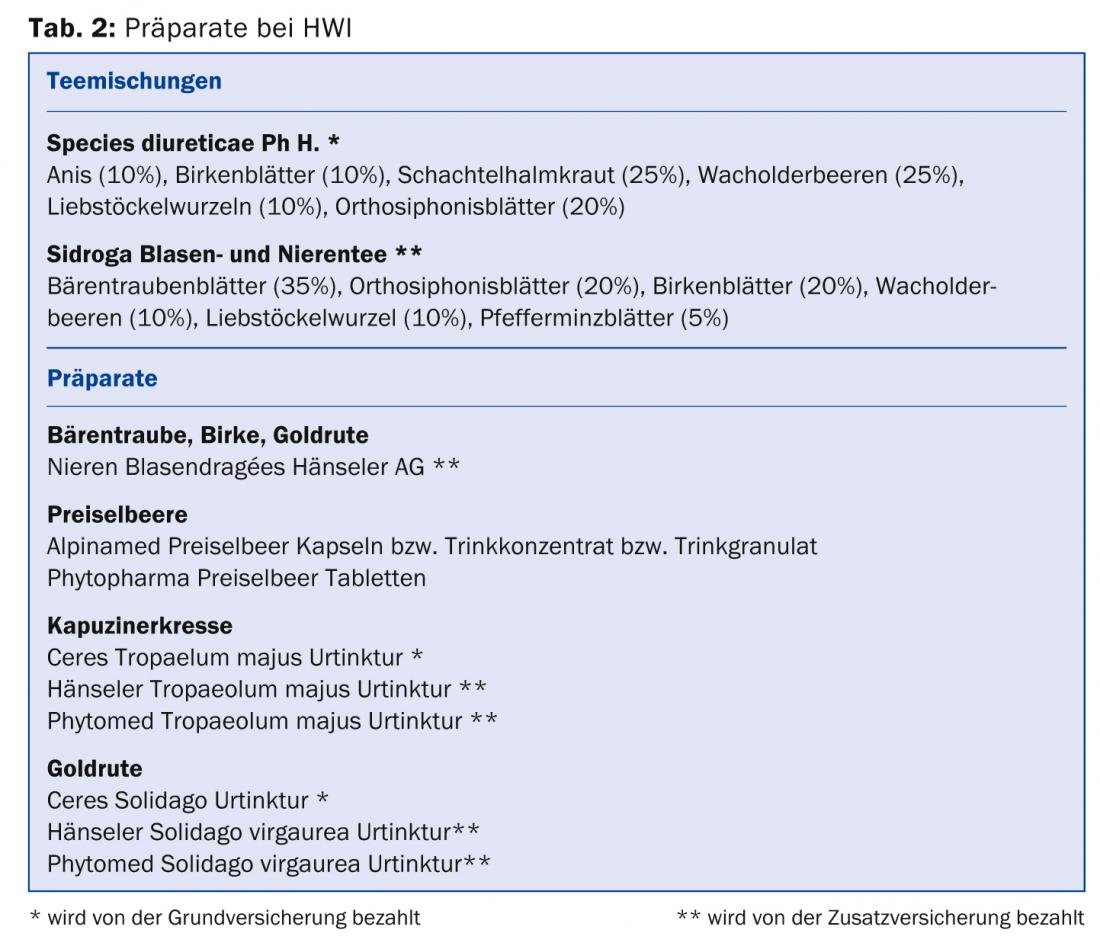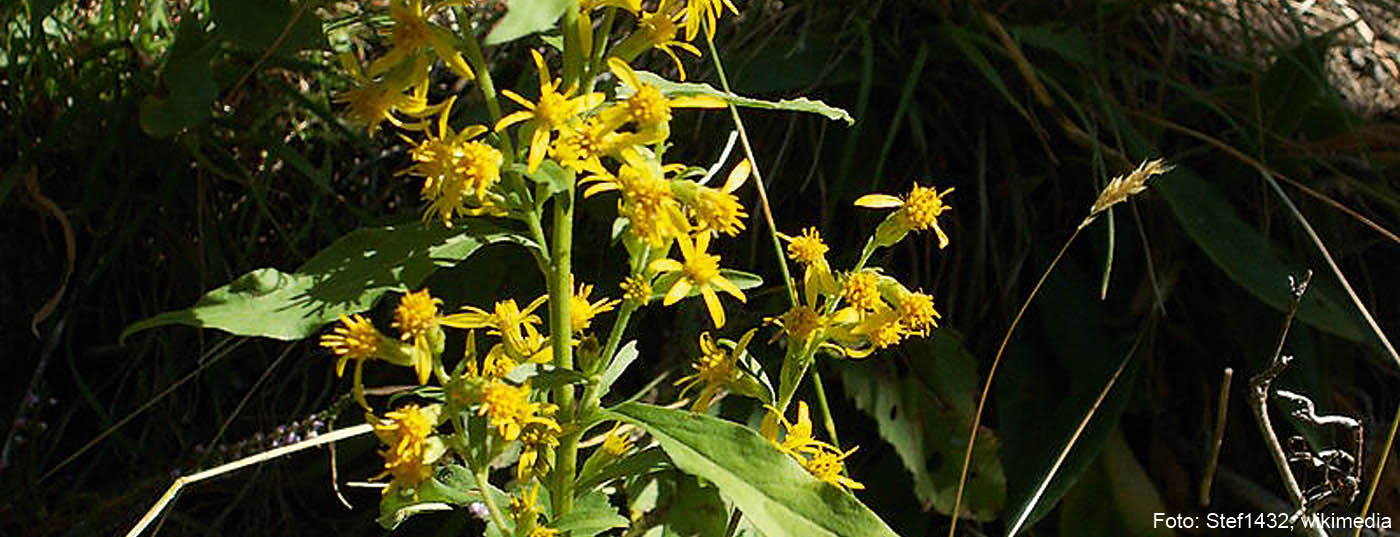Urinary tract infections (UTIs) are inflammation in the area of the urinary tract caused by bacteria and are now often referred to as LUTS (“lower urinary tract infections”). If a urinary tract infection is not accompanied by fever and flank pain, which would indicate kidney involvement, a herbal preparation may well be used in an initial phase. Ideally, cystitis is stopped or cured by this measure.
In any case, when urinary tract infection (UTI) symptoms occur, flushing therapy is also indicated. First and foremost, this includes drinking plenty of fluids and, at best, using aquaretics. In the case of herbal therapy, this means the use of diuretic medicinal plants in the form of tea, tinctures or also in the form of tablets (Table 1).

Disinfectant medicinal plants
Besides these herbal aquaretics, there are some medicinal plants with a disinfecting effect on the urinary tract. These effects are achieved primarily through glycosides and tannins found in the corresponding medicinal plants. The exact mechanism of action is not yet known [1]. These disinfectant medicinal plants include: Bearberry, cranberry, nasturtium and goldenrod (Table 2).

Bearberry
Bearberry (Arctostaphylos uva-ursi (L.) Spreng) has long been a component of many kidney and bladder teas. Medicinally used are the dried leaves. The main components found in bearberry leaves are the hydroquinone derivative arbutin and tannins, which are responsible for the bitter taste of the drug and are therefore rejected by many patients. The earlier opinion that bearberry is effective only in alkaline urine has recently become controversial [2]. The positive Commission E1 monograph for bearberry has since been withdrawn, but the monograph “Bearberry Leaf” of ESCOP, the European Scientific Cooperative on Phytotherapy, has not [3].
Cranberry/Cranberry
In the USA, cranberry is used throughout, whereas in Europe it is always cranberry. Although the two medicinal plants are often used interchangeably, they are two different plants:
- Vaccinium vitis-idaea: cranberry
- Vaccinium macrocarpon: American cranberry.
Although there are a large number of positive publications that have demonstrated the efficacy of cranberry for mild UTI (especially in women) [4,5], a new review from the Cochrane Collaboration questions its efficacy [6]. However, any methodological errors must be pointed out in this context.
Nasturtium
In Switzerland, nasturtium (Tropaeolum majus L. [7]) is less commonly used, although it is highly valued by many physicians practicing phytotherapy and is often used in UTI. The most important ingredients are mustard oil glycosides. Clinical data are not known.

Goldenrod
Goldenrod (Solidago virgaurea L.) also has a urinary tract disinfectant effect [8], is a component of appropriate tea mixtures, is used as a tincture, and is also present in kidney and bladder dragées, which are often sold in pharmacies for mild UTIs.
Literature:
- Schilcher H, Kammerer S, Wegener T: Leitfaden Phytotherapie, 4th edition 2007; 719-720.
- Uehleke B: ARS MEDICI thema Phytotherapie 2013; 13(1): 12-13.
- ESCOP online Monography 2014.
- Stothers L: Can J Urol 2002; 9(3): 1558-1562.
- Wang CH, et al: Archives of internal Medicine 2012; 172(13): 988-996.
- Jepson RG, et al: Cochrane Databasse Syst Rev 2012 Oct 17; 10.
- Gasparotto A, et al: J Ethnopharmacol 2012; 141(1): 501-509.
- Melzig F: Wien Med Wochenschr 2004; 154(21-22): 523-527.
HAUSARZT PRAXIS 2014; 9(7): 4-5











